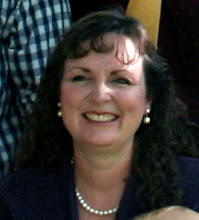Several years ago I taught a genealogy class to a group of seniors (the over 65 variety). They were all very interested in genealogy and many of them were responsible for collecting and compiling their family's genealogical records. Most had written and published their own personal histories. I secretly wondered why these students wanted to come to my class when I would teach them how to do things they had already done. I decided to try a new approach which I found very successful. We focused on creating a book geared towards the youth in their families.
On the second day of class each student brought with them a 5 generation pedigree chart, showing themselves as the first person. I then introduced my plan of making a 5 generation ancestor book. This book would really be a 3 ring binder which included, 1 - their 5 generation pedigree chart, 2 - family group records for every couple on the chart and 3 - a biographical sketch and photo of each individual listed on the pedigree chart.
Now the first part of creating the book was fairly simple. All that was needed were printouts of information that could be found in a personal genealogy database. The difficult part was writing the ONE page biographical sketch for each person. Let me explain. We determined that one page would give the reader an idea of who this ancestor was and that one page is not too long for a youthful read to actually read.
The first writing assignment was to write a ONE page biographical sketch about ourselves. The instructions were that the biographical sketch was to be only ONE page. The purpose was to share something that the youth could relate to, it could include personal interests or a short experience, something that would help the youth make connections with this older generation. We left that day to write our own ONE page, we all were very excited.
As we returned to the next class everyone brought their ONE page biographical sketch. I had to smile as each student shared their experience. Most had changed the margins, then the font to try to include more on their one page. We all found that it was necessary to eliminate facts that could be found on the accompanying forms and focus on one experience or just sharing our interests.
We repeated this experience every week adding the parents, then grandparents, then great grandparents. Each time we had less information to work with and had to rely on memories, or research. When completed, this book was a treasure to each of us. My students, these seniors, gave copies of their books to their grandchildren hoping to bride the generations and spark an interest in family history.
Roots and Branches
10 years ago





